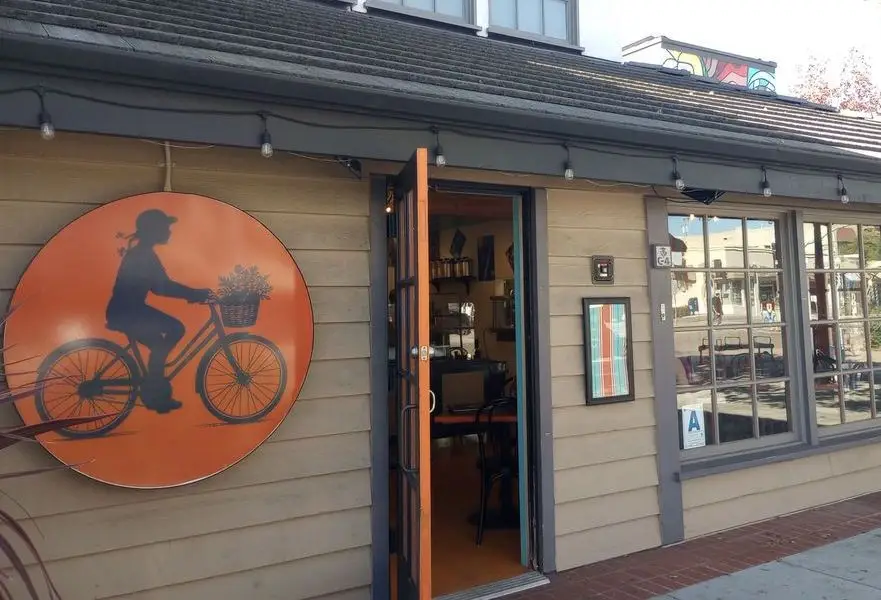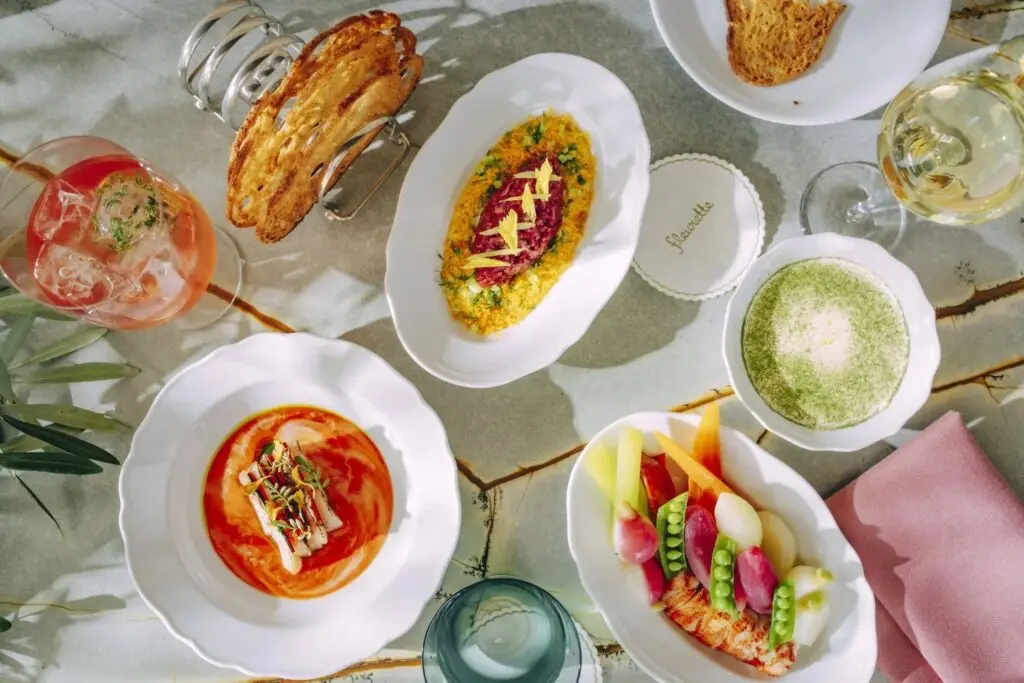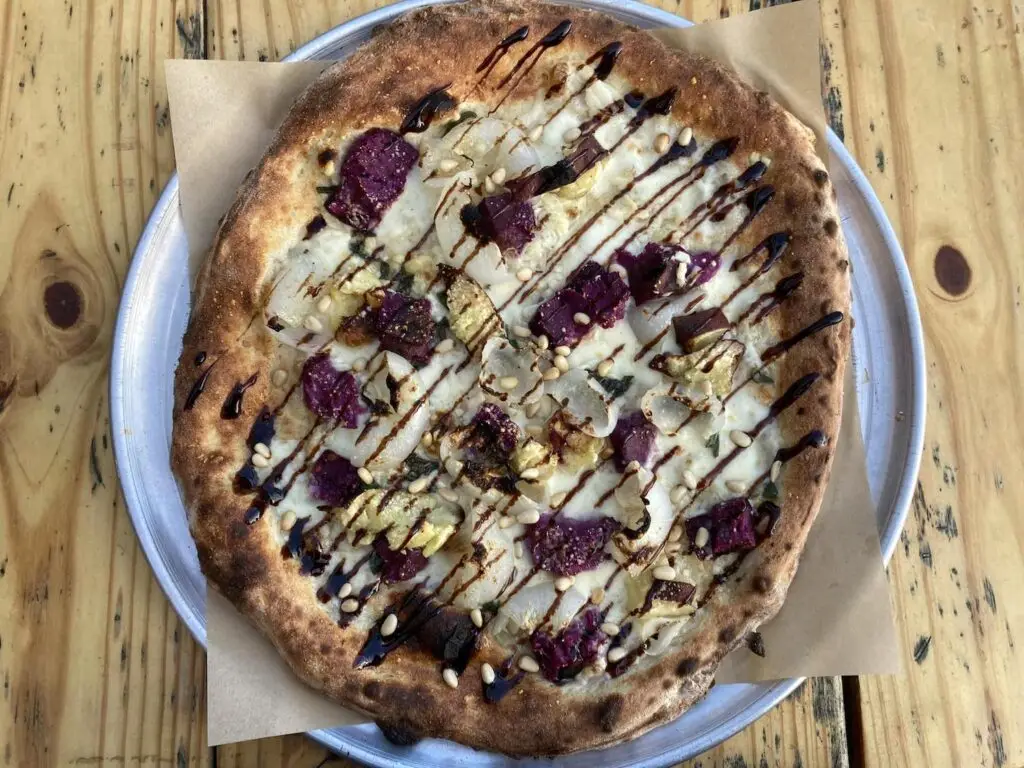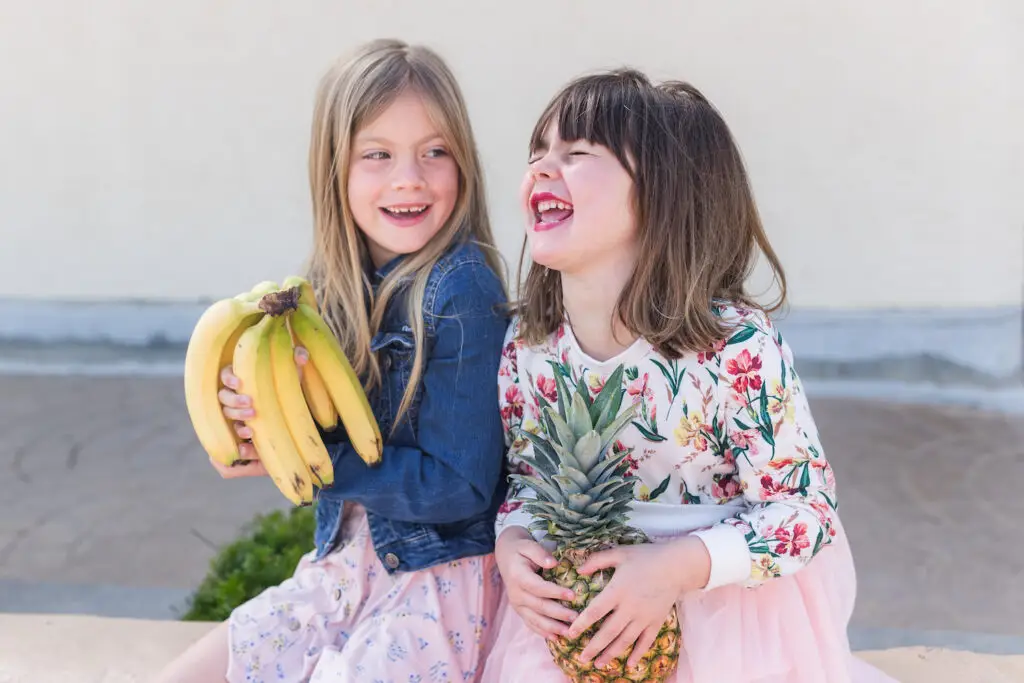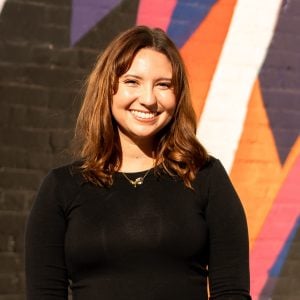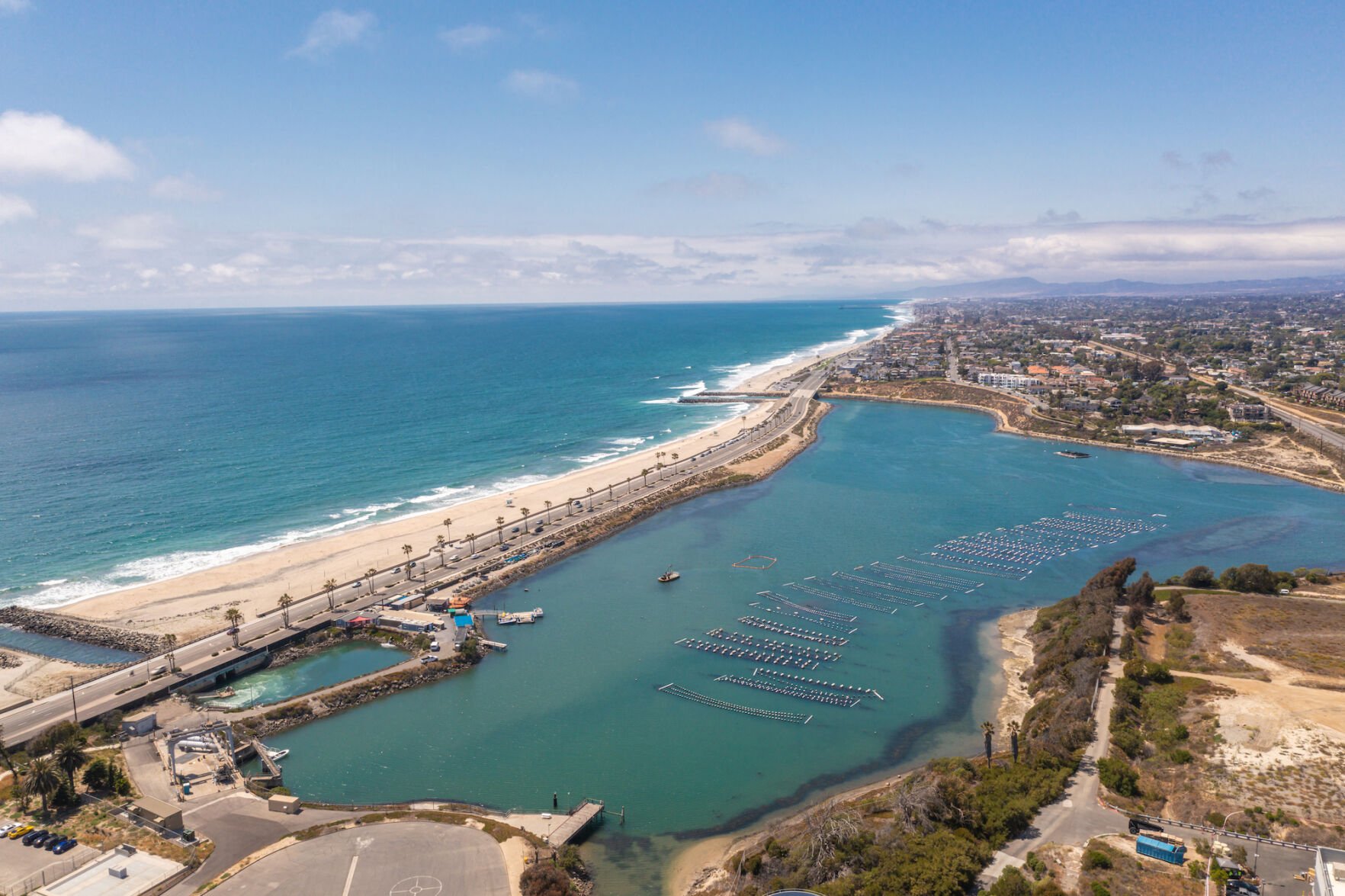
Carlsbad Aquafarm
Courtesy of the Carlsbad Aquafarm
In a past life, I was a substitute teacher. I’d tell the kids fun facts about myself, a rarely successful attempt to get them to think of me as human so they wouldn’t throw markers at me. I’d grown up in a desert, I’d inform them. I love ice hockey. My favorite animals are oysters.
Once, a tiny sixth grader raised his hand. “Do you eat oysters?”
“I do!” I said.
He gazed at me with dawning horror. “Why would you eat your favorite animal?”
“Well,” I stammered. “They don’t have brains.” His lip trembled. I knew abruptly that I would not be able to avoid the airborne markers. I had become a flesh-eating monster.
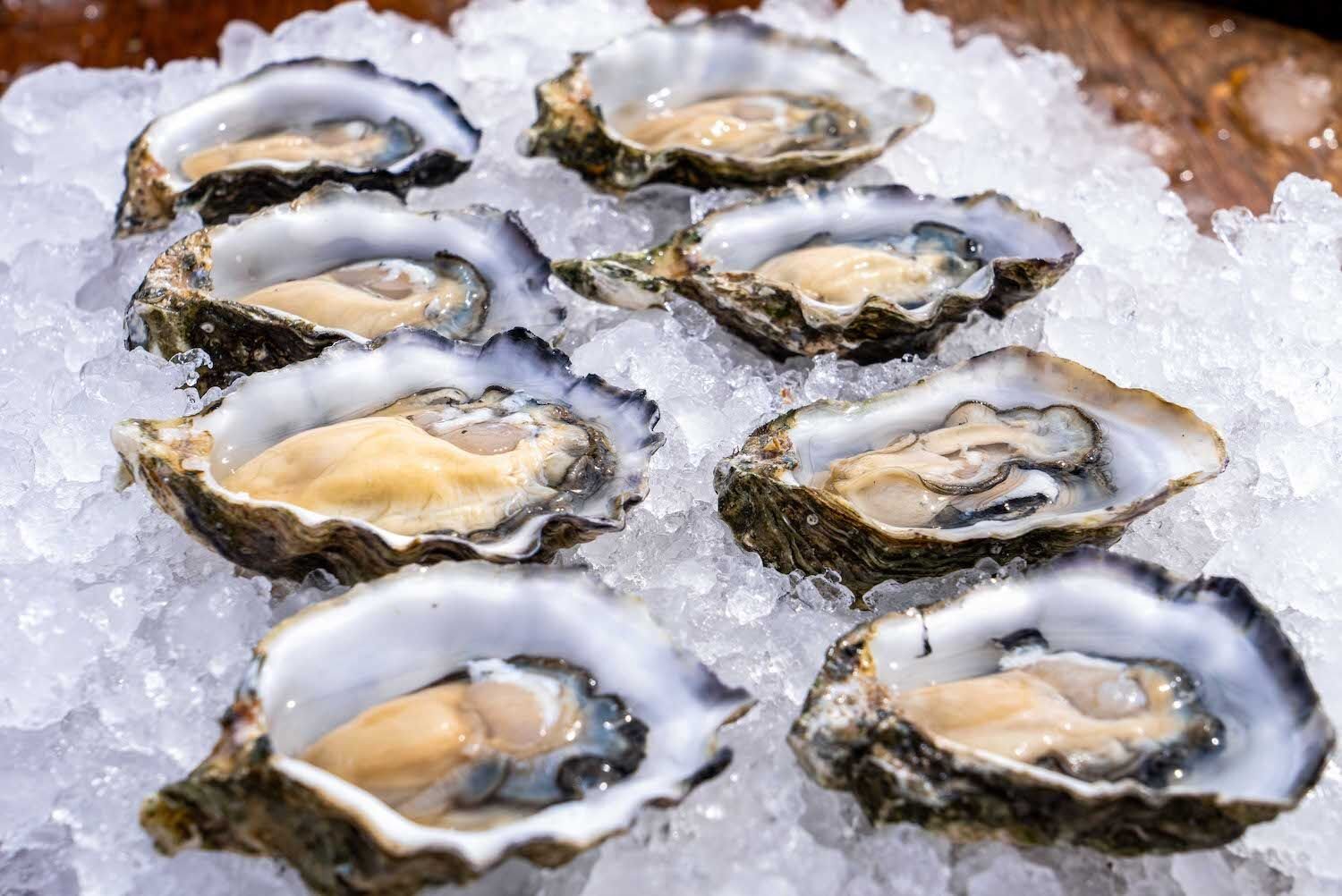
Farmed in saltier water, Carlsbad’s oysters taste brinier than those from the rain-soaked Pacific Northwest.
Courtesy of the Carlsbad Aquafarm
It’s easy to explain why I eat oysters—they’re delicious. Often unfairly maligned as “slimy,” their texture, to me, is more akin to a soft fruit, tender with a slight bite. A raw oyster hits the tongue with a burst of salt before mellowing out into a fresh almost-sweetness. They’re also marvelously healthy, rich in vitamins B12 and D, iron, magnesium, phosphorus, zinc, copper, and other micronutrients.
Explaining why they’re my favorite animals takes longer.
Like I should have stuck to telling my students, I’m a child of the desert, raised amid sagebrush and rattlers. I became fascinated with oysters after learning about their potential as bioremediative powerhouses. As filter-feeders, each tiny creature filters about 50 gallons of water a day, clearing it of sediment and contaminants.
After a landlocked lifetime, oysters were my way into feeling connected to and more curious about the ocean. They’re part of why I leapt in feet-first after moving to San Diego last year, snorkeling and swimming and beachcombing—and, on my 25th birthday, touring the Carlsbad Aquafarm to see how oysters are grown.
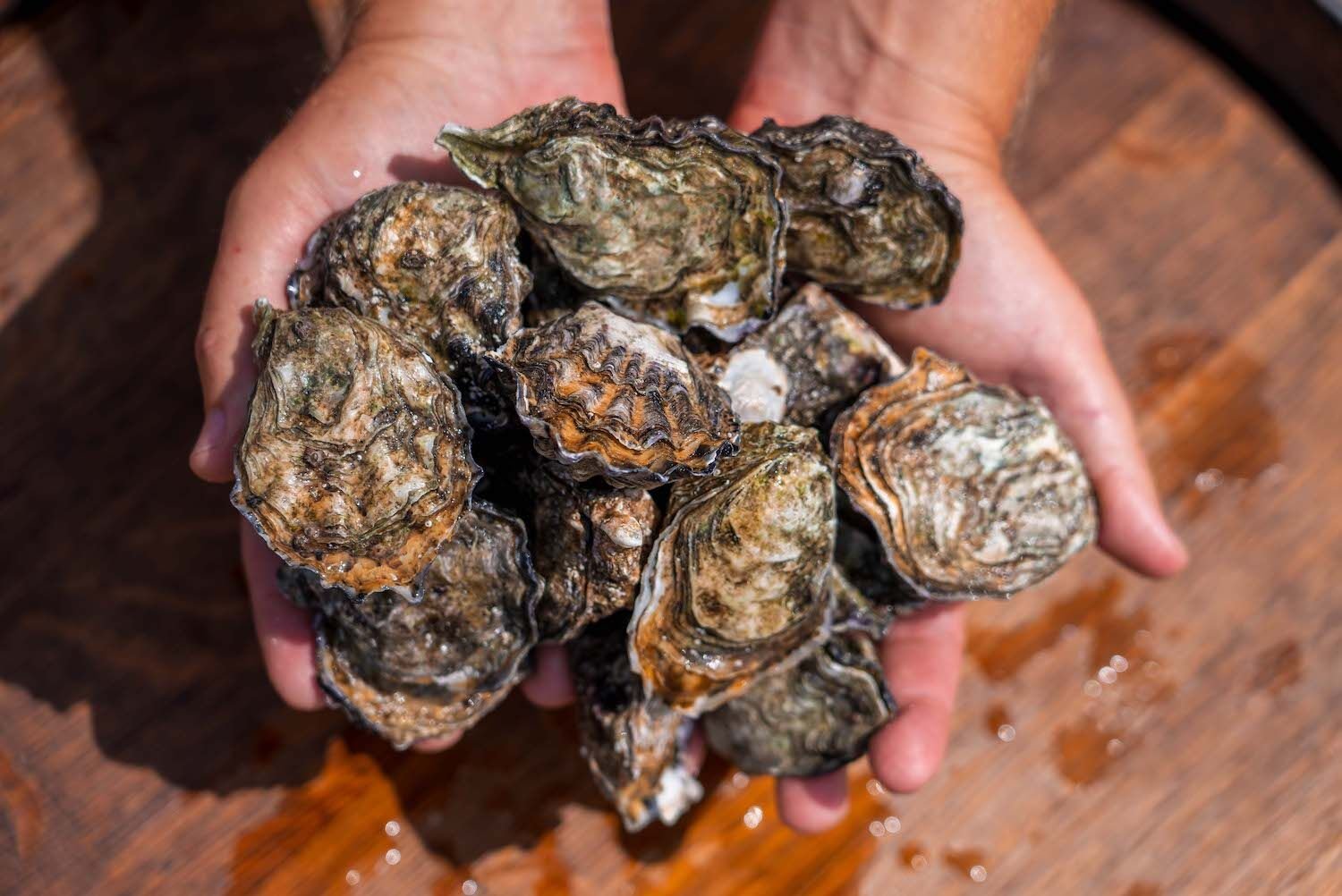
Most oysters farmed on the West Coast are Pacific oysters, which shift in taste (and name) according to the conditions in which they grow. The aquafarm raises two varieties of Pacific: the Carlsbad Luna and the Carlsbad Blonde.
The aquafarm was founded in the 1950s. The researchers who helped establish it tried a handful of species—lobsters, abalones, urchins—before realizing that bivalves like mussels thrived in the area. The farm added oysters to its lineup in 1990 and opened for tours (which include a stroll around the facility, plus a shucking lesson and six oysters to eat) just two years ago.
The farm works in partnership with the nearby desalination plant. The plant pulls in 500 million gallons of seawater a day, bringing nutrients to the shellfish and helping them grow more quickly—Carlsbad’s oysters reach market size in about a year instead of the more typical 18 months at other farms. Meanwhile, the shellfish munch algae and other particles, helping the desalination plant work more efficiently.
The aquafarm’s five acres yield about 2 million pounds of oysters and mussels per year. “If this were a grassland and we were raising cattle, we’d only have enough food to raise half a cow here,” says Matt Steinke, the farm’s general manager. (That’s about 180 pounds of beef.) Gruesome image of a bisected cow grazing its way to marketable chubbiness aside, the comparison contextualizes just how many resources go toward putting animal products on our tables.
More than 67 percent of the country’s crops are used to feed the livestock we rely on for meat, dairy, and eggs. By contrast, an oyster farmer needs only to establish their crops in a place where water flows, and the creatures will grow fat and happy—and the water around them cleaner, by far, than it was before.
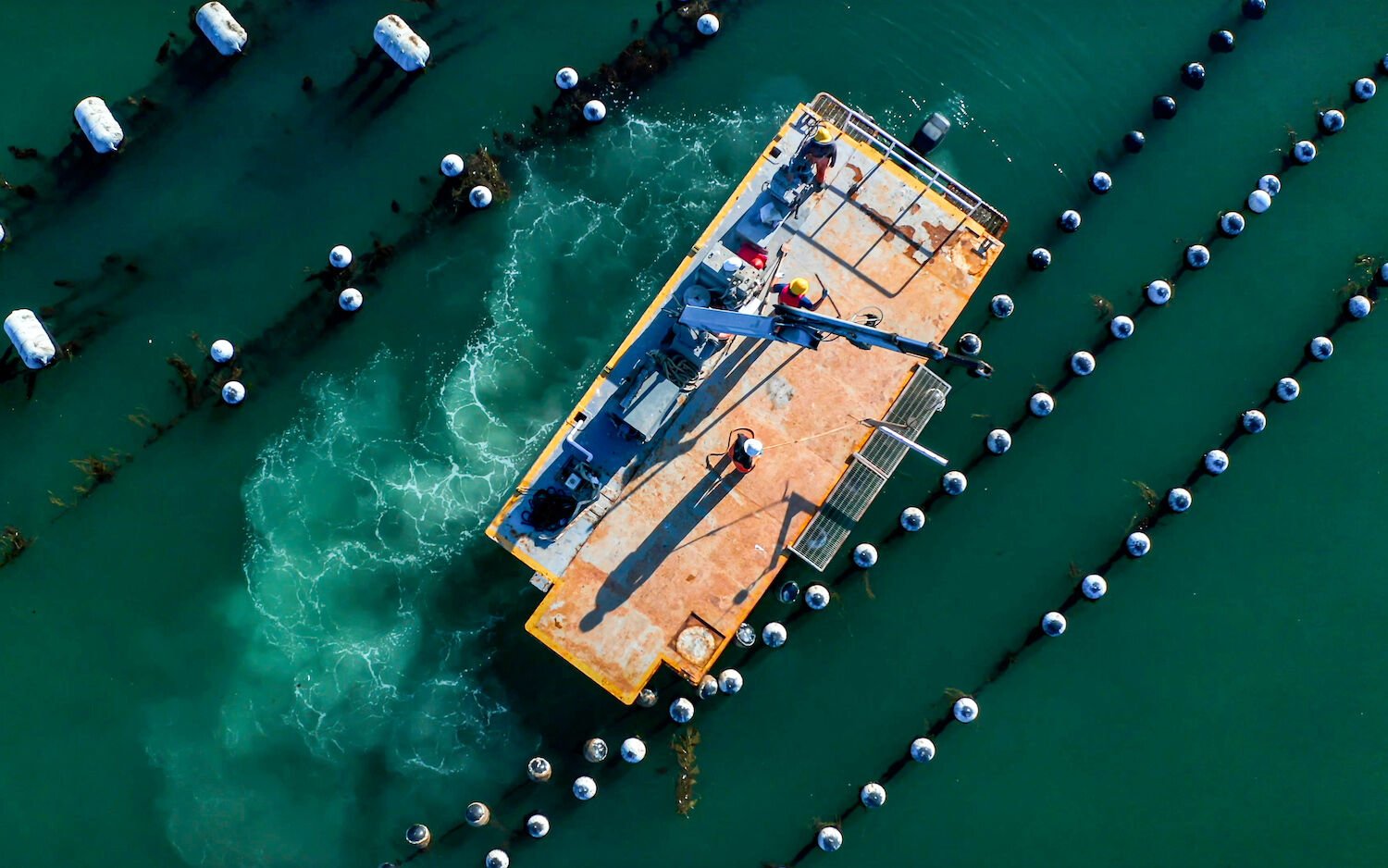
Bivalve farming is dangerous business. The oysters grow in stacks of ten trays. Each stack holds about 600 oysters, which weigh in at a total of 100 to 200 pounds. The farmers harvest on boats with cranes, which lift as many as 20 of the stacks at a time. Farmers grab each stack and haul it by hand onto the deck. On shore, they sort and clean the oysters, discarding dead ones and pulling larger-than-average animals as breeding stock.
Courtesy of the Carlsbad Aquafarm
In fact, the animals’ filtering prowess is such that, this summer, the aquafarm will launch a project to create an artificial oyster reef.
Oysters reproduce by releasing eggs and sperm into the water. When those gametes meet, they form a weensy, free-swimming baby oyster. At about a month old, the littles attach to something within the ocean and start growing their shells—then never move again. “Their very favorite thing to grab onto is other oyster shells, because [that] must be a good place for oysters to live,” Steinke says.
Because of this, researchers and organizations can establish reefs by installing solid, underwater structures studded with old oyster shells. Live bivalves will attach to them, purifying the surrounding water. “They’re ecosystem engineers,” says Theresa Talley, a coastal specialist with the California Sea Grant at Scripps Institution of Oceanography.
In San Diego County, cleaner and clearer water allows endangered eelgrass to grow, which provides a “nursery” for baby fish. “[Eelgrass] is a keystone species that triggers an enormous boom of life,” Steinke explains.
Already, the oyster crops have fostered an increased growth of eelgrass around the farm. “There are three lagoons in Carlsbad, and there’s wildlife that we see here that you don’t see in the other two lagoons,” Steinke says. The eelgrass meadow is home to creatures like San Diego’s native seahorse. In the lagoon, seals, sea lions, and seabirds hunt mussel-hungry fish and excrete, ahem, nutrients that, in turn, help the shellfish grow.
In addition, the artificial reef will provide another use for the farm’s massive pile of old shells, which has historically been utilized by community groups for construction and restoration projects—or just to feed chickens.
The shells themselves are made of calcium carbonate, which oysters produce by pulling carbon dioxide from the ocean and atmosphere. The CO2 in an oyster’s shell is trapped for around 10,000 years. (By comparison, trees, which absorb the compound as they grow and release it when they die, lock up CO2 for about a century.) “It’s a much more efficient way to carbon fix,” Steinke says.
On top of it all, “[oysters] are a really good indicator species,” Steinke continues. When the reef is erected, scientists will be able to test the oysters to see what they’re filtering and how their growth rate is impacted by environmental factors—which tells them more about what might be happening to other marine life nearby.
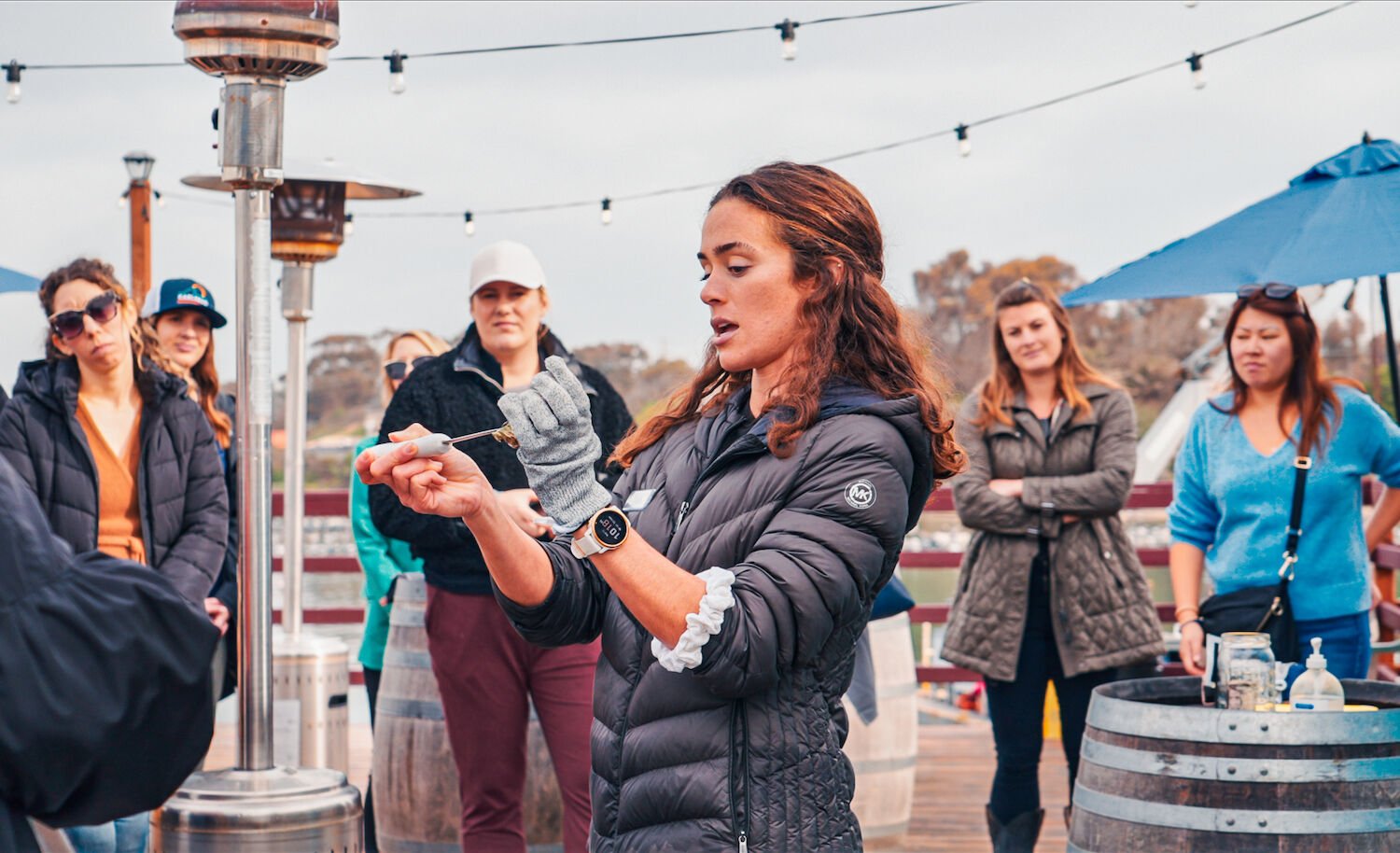
Halle Martino, the aquafarm’s hazard analysis and critical control point coordinator, shows tour guests how to shuck.
When I share fun facts about oysters’ super-cleaner quality, negative nancies say things like, “So, we’re eating all the stuff they filtered out?” As the aquafarm’s guides reassure visitors, however, we’re not.
Once the farmers harvest a crop of oysters from the lagoon, the critters undergo a depuration process. Triple-filtered, ultra-clean saltwater from the lagoon runs over them for four days, forcing them to purge dirt, sediment, or toxins. A sampling of each batch is tested for bacteria and contaminants before the oysters are made available for purchase and consumption.
The aquafarm currently exclusively sells its oysters to locals for onsite pickup—or plops them in front of tour-goers learning to shuck.
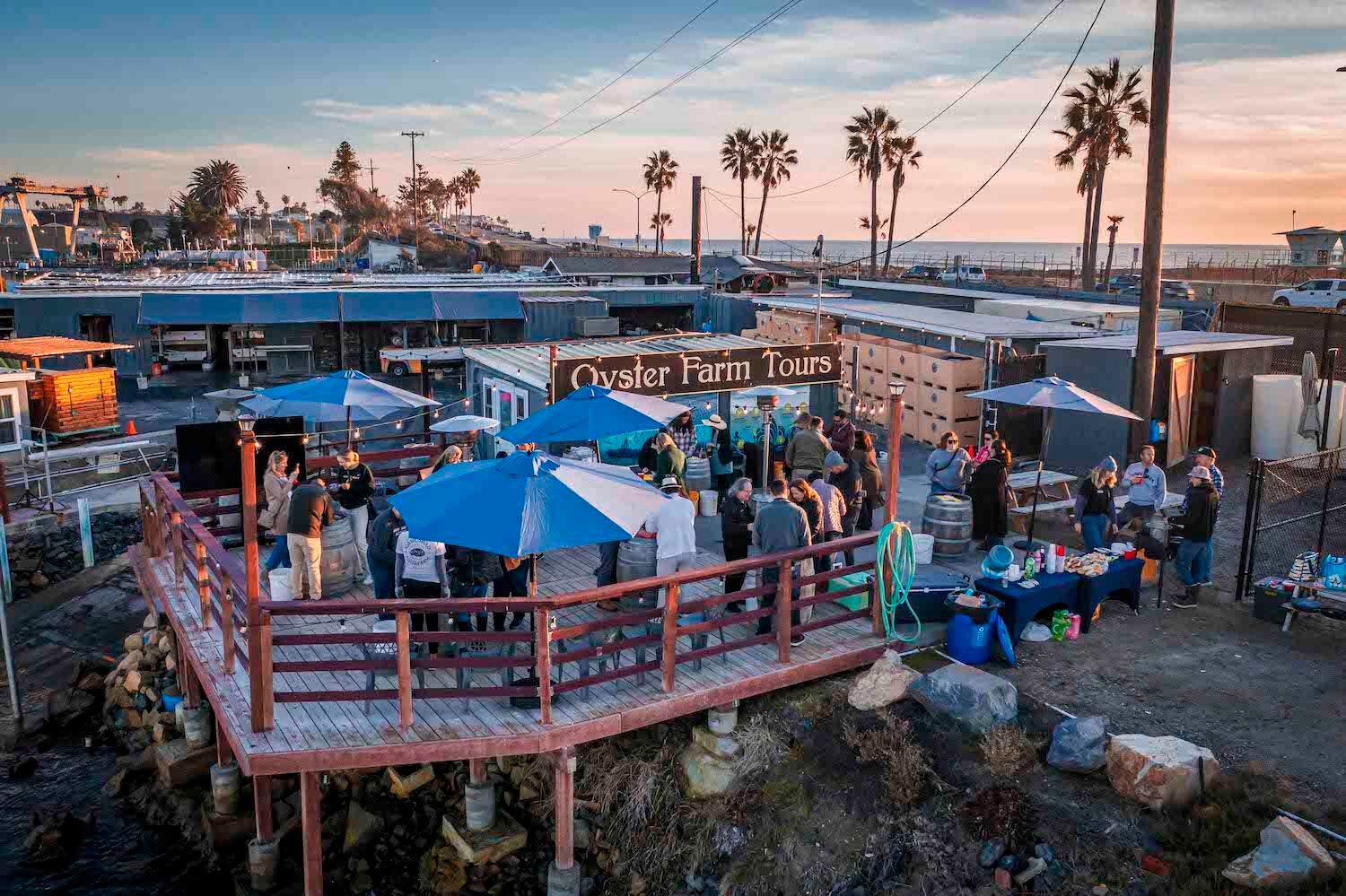
The aquafarm’s dock overlooks the lagoon and its rows of buoys laden with heavy stacks of oyster-filled trays. The buoys keep the shellfish suspended about 10 feet below the surface, reducing the farm’s impact on seafloor wildlife.
Courtesy of the Carlsbad Aquafarm
Oysters, I believe, have another, less obvious sustainable superpower: They can force us to reckon with where our food comes from.
Shucking is the closest many of us get to preparing our own meat, from whole, unyielding body to tender, edible flesh. It’s easier with practice, but there’s a sense of sweat and danger to it. On the aquafarm’s dock, bitten by seabreeze, my fellow tourists and I cajole, wrestle, pry the shells open. My knife slips, and I open a near-invisible cut on my hand.
The rewards of my tiny blood sacrifice are plump, silky bites of seafood with clean notes of cucumber beneath the expected oceanic zing of the “oyster liqueur” (the saltwater that lingers in the shell after shucking).
PARTNER CONTENT
As I squeeze on lemon and tip back my head, I don’t feel monstrous eating my favorite animal. Instead, I feel part of all of it: The creature that sustained the lagoon is now nourishing me. The shell in my hand will be an anchor for a future baby oyster. The water, as always, will flow.
